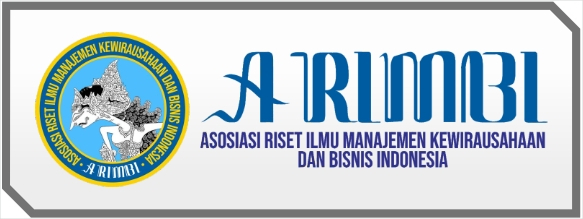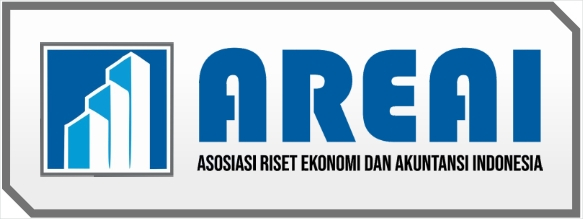Accounting Information System Development End-user-based for Improving Digital Business
DOI:
https://doi.org/10.55606/ijemr.v1i3.45Keywords:
User Role, System Strategy, Conceptual Design, System Selection, Accounting Information System Development.Abstract
This study aimed to determine the end user's role in system strategy, conceptual design and system selection for the successful development of accounting information systems at PT. Radik Jaya, Indonesia and to know the supporting factors and constraints for the development of accounting information systems in PT. Radik Jaya Indonesia. The research method used was qualitative with a case study approach. Data was collected with observation and in-depth interviews directly with key sources of information (CFO, Financial staff, HR and general staff), documentation, credibility, and source triangulation. Taxonomy was used as the data analysis method.
The result showed that the roles of the user to determine the success of the development of accounting information system at PT. Radik Jaya Indonesia. These roles include the user's role in system strategy, conceptual design, and system selection. The role of users in the system strategy was to provide information and proposals related to the features carried out the development of accounting information systems in order to run effectively. The role of the user in conceptual design was to ensure the design of the accounting information system in accordance with the PSAK and in accordance with the description of the information provided in the process of designing the system strategy. The selection of the system was done in detail, the user plays a role in the selection of the system by paying attention to the features that have been applied in accordance with the operational needs of the company's work and business. The information presented displayed well. The client guarantees the costs caused by the organization during the time spent fostering the bookkeeping data framework as per the plan that has been made.
References
Adiputra, I. M. (2012) Pengaruh Partisipasi Pemakai Terhadap Kepuasan Pemakai Dalam Pengembangan Sistem Informasi Akuntansi Dengan Tiga Variabel Moderasi Pada Pasar Swalayan Di Kota Denpasar. Jurnal Ilmiah Akuntansi Dan Humanika, Vol. 1, No. 2. hal. 1-24.
Arief, K. (2013) Pengembangan Model Sistem Informasi Akuntansi Online Untuk Usaha Kecil Menengah. Sigma-Mu (Jurnal Penelitian & Gagasan Sains Dan Matematika Terapan), Vol. 5, No. 2. hal. 133-144.
Creswell, J. W. (2016) Research Design Pendekatan Metode Kualitatif, Kuantitatif, Dan Campuran. Yogyakarta: Pustaka Pelajar.
Diana, A., & Setiawati, L. (2011) Sistem Informasi Akuntansi:Perancangan,Proses, Dan Penerapan. Yogyakarta: ANDI.
Darudiato, S., & Sari, E. C. (2011) Pengembangan Sistem Informasi Akuntansi PT. Surya Warfa Kharisma Studi Kasus: Penjualan, Piutang, Dan Penerimaan Kas. Comtech, Vol. 2, No. 1. hal 60-17.
Effendi, S., & Harahap, B. (2019) Analisis Penerapan Sistem Informasi Akuntansi dan Sistem Pengendalian Internal dalam Mengembangkan Bisnis di Kota Batam. Prosiding Seminar Nasional Ilmu Sosial dan Teknologi (SNISTEK), Vol. 2. hal. 217-222.
Fu’ad, K. (2015) Peran Penting Pengendalian Internal Dalam Sistem Informasi Akuntansi. Jurnal Akuntansi Universitas Jember, hal. 27-36.
Hall, J. A. (2007) Sistem Informasi Akuntansi. Jakarta: Salemba Empat.
Haryanti, C. S. (2014) Hubungan Partisipasi Dan Kepuasan Pemakai Dalam Pengembangan Sistem Informasi. Serat Acitya,Vol. 3, No. 2. hal. 49-58.
Hopwood, W., & Bodnar, G. (2010) Accounting Information System. Yogyakarta: Andi.
Husaini, M. (2016) Perencanaan Strategis Pengembangan Sistem Informasi Terintegrasi Di Pt. Peksi Gunaraharja Divisi Pakan Ternak. Jurnal Mikrotik, Vol. 6, No. 3. Hal. 1-22.
Laudon, K. C., & Laudon, J. P. (2017) Sistem Informasi Manajemen. Jakarta: Salemba Empat.
Ma’mur, M., & Nurmaswan. (2019) Sistem Informasi Akuntansi Pendapatan Pada Toko Melosa Bandar Lampung. Jurnal Sistem Informasi Akuntansi (Jusinta), hal. 41.
Mahardika, I. B., & Suardikha, I. S. (2018) Analisis Faktor-Faktor Yang Mempengaruhi Kinerja Sistem Informasi Pada Bpr Di Kota Denpasar. E-Jurnal Akuntansi Universitas Udayana, Vol. 24, No. 3. hal. 2073-2095.
Melani, Y. (2019) Pengembangan Sistem Informasi. Researchgate, hal. 1-12.
Nurbatin, D., & Lestari, P. (2018) Pengembangan Model Sistem Informasi Akuntansi Rumah Sakit Sebagai Informasi Pendapatan Atas Pelayanan Pasien Peserta Bpjs Di Rsu Universitas Muhammadiyah Malang. Conference On Innovation and Application of Science and Technology (Caltech 2018), hal. 41-50.
Ningtyas, S. A., Halim, M., & Puspito, A. (2019) Desain Sistem Informasi Akuntansi Penjualan Tunai Dan Penerimaan Kas (Studi Kasus Pada Ud. Putra Tape 99). Jurnal Rak (Riset Akuntansi Keuangan), Vol. 4, No. 1. hal 75-86.
Oktavia, T. (2013) Model Konseptual Sistem Informasi Sebagai Penunjang Operasional Perusahaan Dagang. Jurnal Binus, hal. 355-362.
Otinur, F., Pangemanan, S., & Warongan, J. (2017) Analisis Sistem Informasi Akuntansi Dan Sistem Pengendalian Internal Persediaan Barang Pada Toko Campladean Manado. Jurnal Riset Akuntansi Going Concern, Vol. 12, No. 1. hal. 169-179.
Pratama, F. A., & Sediyono, E. (2017) Analisis Peranan User Pada Proses Sdlc Terhadap Pengembangan Sistem Informasi Perjalanan Dinas. Jurnal Buana Informatika, Vol. 8, No. 1. hal. 11-18.
Risna. (2019) Pertimbangan Penting Ketika Memilih Software Akuntansi Untuk Ukm. Jurnal Entrepreneur, hal. 1-8.
Romney, M. B., & Steinbart, P. J. (2016) Sistem Informasi Akuntansi. Jakarta: Salemba Empat.
Rukmiyati, N. M., & Budiartha, I. K. (2016) Pengaruh Kualitas Sistem Informasi, Kualitas Informasi Dan Perceived Usefulness Pada Kepuasan Pengguna Akhir Software Akuntansi (Studi Empiris Pada Hotel Berbintang Di Provinsi Bali). E-Jurnal Ekonomi Dan Bisnis Universitas Udayana, hal. 115-142.
Sari, N. Z. (2018) Pengaruh Strategi Bisnis, Metoda Pengembangan Sistem (System Development Life Cycle), Terhadap Kualitas Sistem Informasi Akuntansi (Survei Pada PT Len Industri Persero-BUMN Industri Strategis Di Indonesia) . Sosiohumanitas, hal. 176-190.
Sukmawati, R., & Nugroho, D. H. (2017) Pengaruh Penggunaan Teknologi Informasi, Keterlibatan Pemakai Dan Dukungan Manajemen Puncak Terhadap Kinerja Sistem Informasi Akuntansi(Studi Kasus Pada CV Jaya Motor). Accounting Global Journal, Vol. 1. No. 1. hal. 77-92.
Suhatman, Z. (2018) Perancangan Dan Implementasi Sistemi Informasi Akuntansi Pada Sistem Manajemen Akuntansi Pada Sistem Manajemen. Jurnal Unpam, hal. 1-25.
Susanto, D. (2014) Analisis Desain Dan Pengembangan Sistem Informasi Akuntansi Siklus Pendapatan Dalam Upaya Meningkatkan Pengendalian Internal Apotek “Sumber Sehat”. Jurnal Ilmiah Mahasiswa Universitas Surabaya, Vol. 3. No. 2. hal. 1-12.
Taufik, H. (2019) Pengembangan Sistem Informasi Akuntansi Terintegrasi Di Perusahaan Yang Sedang Bertumbuh (Studi Kasus Pada PT Molay Satrya Indonesia). Jurnal Riset Akuntansi Jambi, hal. 1-13.
Tyoso, J. S. (2016) Sistem Informasi Manajemen, Yogyakarta: Deepublish.
Tyoso, J. S. (2017) Sistem Informasi Akuntansi. Sistem Informasi Akuntansi hal. 169. Semarang: Deepublish (CV Budi Utama).
Wahyudin, A., & Kiswanto. (2014) Pengembangan Sistem Akuntansi Berbasis Information And Communication Technology (Ict) Pada Sekolah Unggulan Di Kota Semarang. Jurnal Dinamika Akuntansi, Vol. 6 No. 1. hal. 54-71.
Yusriwarti. (2016) Analisa Pengaruh Keterlibatan Pemakai Dalam Pengembangan Sistem Informasi, Dukungan Manajemen Puncak, Dan Formalisasipengembangan Sistem Informasi Terhadap Kinerja Sistem Informasi Akuntansi Pada PT. Inhil Sarimas Kelapa. Jurnal Akuntansi Dan Keuangan, hal. 1-16.
Downloads
Published
How to Cite
Issue
Section
License
Copyright (c) 2022 International Journal of Economics and Management Research

This work is licensed under a Creative Commons Attribution-ShareAlike 4.0 International License.















